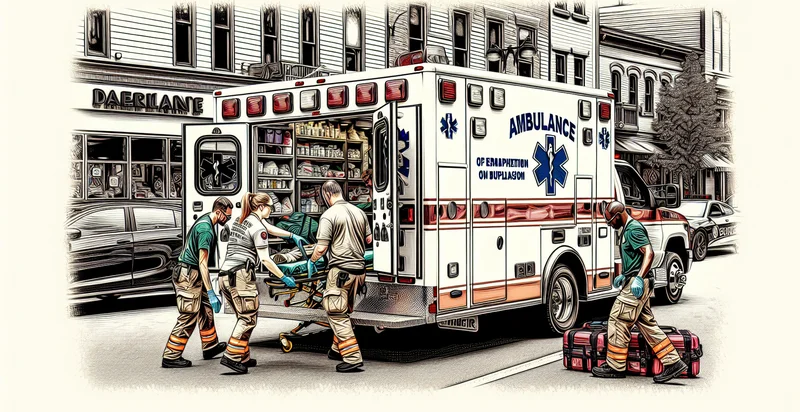Identify if there's an ambulance
using AI
Below is a free classifier to identify if there's an ambulance. Just upload your image, and our AI will predict if there's an ambulance - in just seconds.

Contact us for API access
Or, use Nyckel to build highly-accurate custom classifiers in just minutes. No PhD required.
Get started
import nyckel
credentials = nyckel.Credentials("YOUR_CLIENT_ID", "YOUR_CLIENT_SECRET")
nyckel.invoke("if-there's-an-ambulance", "your_image_url", credentials)
fetch('https://www.nyckel.com/v1/functions/if-there's-an-ambulance/invoke', {
method: 'POST',
headers: {
'Authorization': 'Bearer ' + 'YOUR_BEARER_TOKEN',
'Content-Type': 'application/json',
},
body: JSON.stringify(
{"data": "your_image_url"}
)
})
.then(response => response.json())
.then(data => console.log(data));
curl -X POST \
-H "Content-Type: application/json" \
-H "Authorization: Bearer YOUR_BEARER_TOKEN" \
-d '{"data": "your_image_url"}' \
https://www.nyckel.com/v1/functions/if-there's-an-ambulance/invoke
How this classifier works
To start, upload your image. Our AI tool will then predict if there's an ambulance.
This pretrained image model uses a Nyckel-created dataset and has 2 labels, including Ambulance Not Present and Ambulance Present.
We'll also show a confidence score (the higher the number, the more confident the AI model is around if there's an ambulance).
Whether you're just curious or building if there's an ambulance detection into your application, we hope our classifier proves helpful.
Recommended Classifiers
Need to identify if there's an ambulance at scale?
Get API or Zapier access to this classifier for free. It's perfect for:
- Emergency Response Optimization: This use case involves using the ambulance identifier to enhance emergency response times. By integrating this function into traffic management systems, authorities can prioritize route adjustments in real-time when an ambulance is detected, reducing delays and improving patient outcomes.
- Smart City Infrastructure: Municipalities can leverage the ambulance identifier to create smart city initiatives that dynamically manage traffic signals and road usage when ambulances are present. This ensures a clear path for emergency vehicles, contributing to safer urban environments and more efficient emergency services.
- AI-driven Fleet Management: Ambulance service providers can implement this function to monitor nearby vehicles and status updates. This would enable more effective fleet coordination, ensuring that the nearest available ambulance receives priority for urgent calls based on real-time location data.
- Community Awareness Programs: Companies can use the identifier in mobile applications to alert community members when an ambulance is nearby. This fosters increased awareness and encourages pedestrians and drivers to yield appropriately, enhancing public safety during emergencies.
- Enhanced Surveillance Systems: Security and surveillance firms can utilize the ambulance identifier to improve their monitoring systems. By flagging the presence of ambulances, operators can focus on areas of high activity and ensure appropriate coordination with emergency services.
- Real-time Traffic Analysis: Traffic analytics platforms can integrate the ambulance identifier to provide insights about emergency vehicle frequency and its impact on traffic patterns. This data can be invaluable for urban planners and traffic management authorities when assessing road usage and congestion.
- Insurance and Claims Processing: Insurance companies can integrate the ambulance identifier into claims processing systems to verify the legitimacy of accident reports. This can streamline claims assessments during emergencies, enabling faster resolution and improved customer satisfaction.


